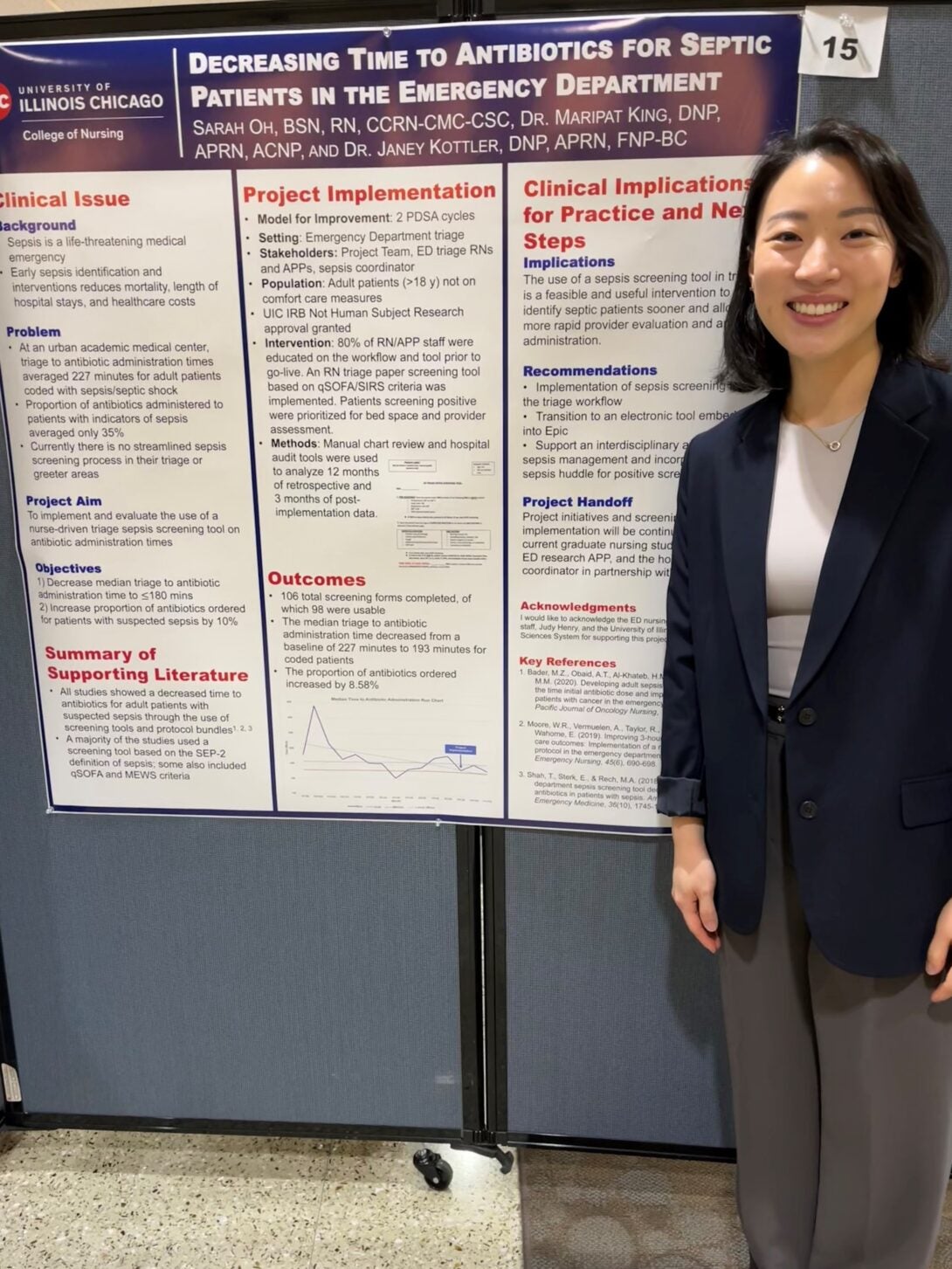Decreasing time to antibiotics for septic patients in the emergency department
Sarah Oh, DNP '24, BSN '17

Clinical Issue: Early sepsis identification and intervention reduces mortality, length of hospital stay, and healthcare costs. At an urban academic medical center, triage to antibiotic administration times in the emergency department (ED) averaged well over guideline-recommended timeframes. There was no streamlined sepsis screening process in the ED triage or greeter areas. This quality improvement project aimed to implement and evaluate the use of a nurse-driven ED triage sepsis screening tool.
Summary of Supporting Literature: Studies showed a decreased time to antibiotics for adult patients with suspected sepsis through use of screening tools and protocol bundles.
Project Implementation: The PDSA Method provided the framework for this project. A triage paper screening tool based on qSOFA/SIRS criteria was implemented for adult patients. Patients who screened positive were prioritized for bed space and provider assessment. Manual chart review and hospital audit tools were used to analyze data for patients coded with sepsis or septic shock. Challenges included limited bed space and staff engagement.
Outcomes: The median triage to antibiotic administration time decreased from a baseline average of 227 minutes to 193 minutes for coded patients. The proportion of antibiotics ordered increased by 8.58%.
Clinical Implications for Practice and Next Steps: Implementation of a nurse-driven ED triage sepsis screening tool was associated with more rapid provider evaluation and antibiotic administration for septic patients. Next steps include implementation of sepsis screening into the triage workflow, transition to an electronic tool, establishing an interdisciplinary sepsis huddle, and continued sepsis awareness and education.